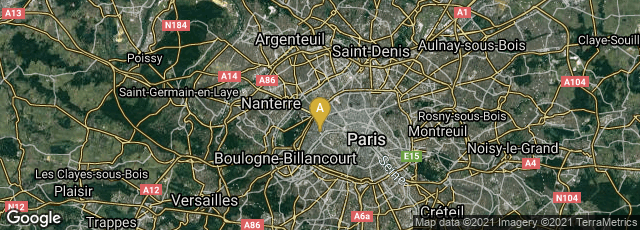

A: Paris, Île-de-France, France
On December 10, 1948 the Universal Declaration of Human Rights (UDHR) was adopted by the United Nations General Assembly at the Palais de Chaillot, Paris. The Declaration, which arose from the experience of the Second World War, represented the first global expression of rights to which all human beings are inherently entitled. In January 2015 the full text of the declaration was available from the United Nations website at this link.
"The Declaration consists of thirty articles which have been elaborated in subsequent international treaties, regional human rights instruments, national constitutions, and other laws. The International Bill of Human Rights consists of the Universal Declaration of Human Rights, the International Covenant on Economic, Social and Cultural Rights, and the International Covenant on Civil and Political Rights and its two Optional Protocols. In 1966, the General Assembly adopted the two detailed Covenants, which complete the International Bill of Human Rights. In 1976, after the Covenants had been ratified by a sufficient number of individual nations, the Bill took on the force of international law.
"During World War II, the Allies adopted the Four Freedoms—freedom of speech, freedom of religion,freedom from fear, and freedom from want—as their basic war aims. The United Nations Charter"reaffirmed faith in fundamental human rights, and dignity and worth of the human person" and committed all member states to promote "universal respect for, and observance of, human rights and fundamental freedoms for all without distinction as to race, sex, language, or religion".
"When the atrocities committed by Nazi Germany became apparent after the war, the consensus within the world community was that the United Nations Charter did not sufficiently define the rights to which it referred. A universal declaration that specified the rights of individuals was necessary to give effect to the Charter's provisions on human rights" (Wikipedia article on Universal Declaration of Human Rights, accessed 01-10-2015).